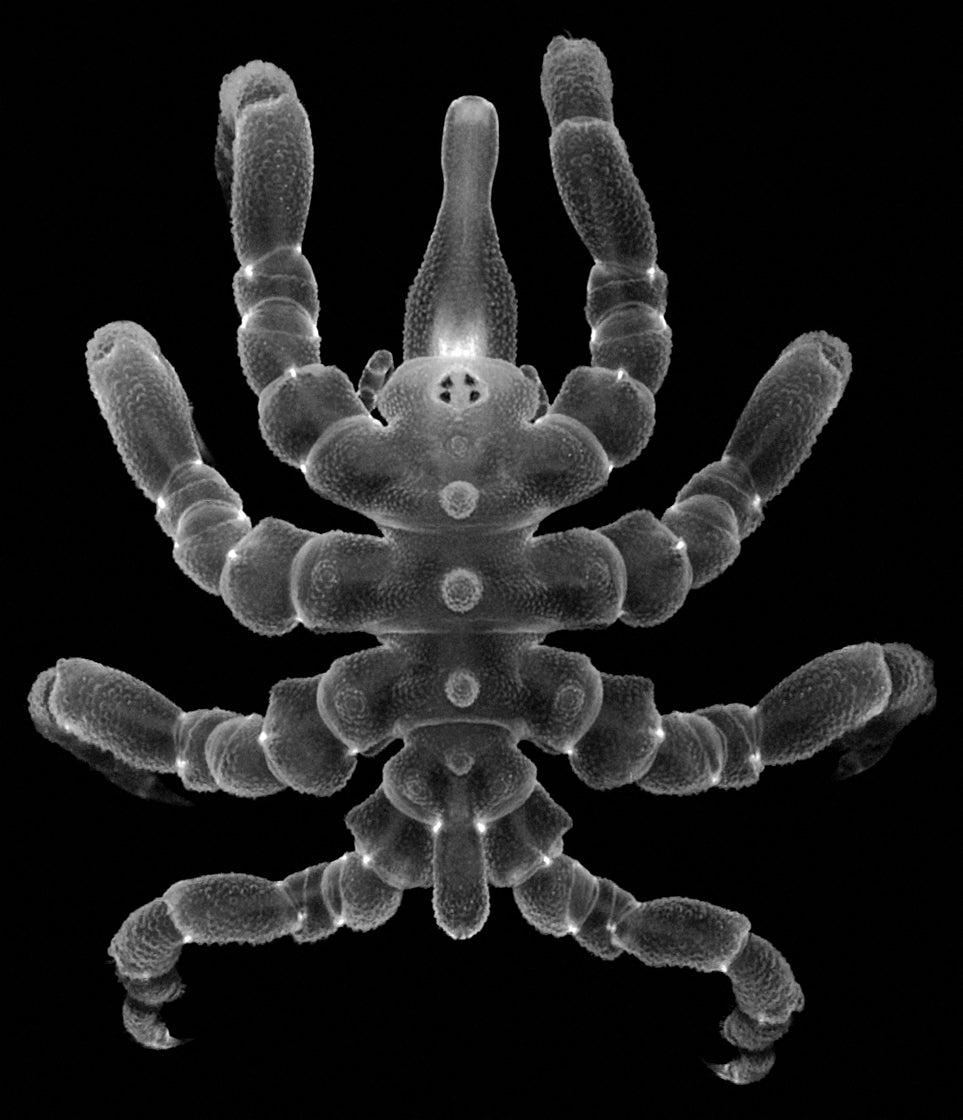Scientists find sea spiders can regrow their anus
Researchers believe this breakthrough could take medical treatments a step closer to regeneration

Your support helps us to tell the story
From reproductive rights to climate change to Big Tech, The Independent is on the ground when the story is developing. Whether it's investigating the financials of Elon Musk's pro-Trump PAC or producing our latest documentary, 'The A Word', which shines a light on the American women fighting for reproductive rights, we know how important it is to parse out the facts from the messaging.
At such a critical moment in US history, we need reporters on the ground. Your donation allows us to keep sending journalists to speak to both sides of the story.
The Independent is trusted by Americans across the entire political spectrum. And unlike many other quality news outlets, we choose not to lock Americans out of our reporting and analysis with paywalls. We believe quality journalism should be available to everyone, paid for by those who can afford it.
Your support makes all the difference.Scientists were baffled after finding some young sea spiders can regrow their rear ends - including muscles, reproductive organs and the anus - or make do without them.
Researchers from Berlin University have discovered that creepy crawlies can regenerate parts of their bottom half.
Professor Gerhard Scholtz, the lead researcher behind the breakthrough, said: “Nobody had expected this”.
Insects are known to be capable of restoring body parts and some sea slugs have managed to craft a new head entirely from a new body.
“If you look at the animal kingdom, the capability of regeneration differs very much in various groups of animals,” Professor Scholtz told Sky News.
“Flatworms, for example, can regenerate their whole body from a limited amount of tissue.
“On the other hand, us - mammals - cannot regenerate much - liver, tissue, skin, but apart from that very little.
“For arthropods - crustaceans, insects, myriapods, and types of spider - it was entirely unknown that they could regenerate body parts other than limbs.”

The scientists carefully amputated the back legs and rear ends of 23 sea spiders to see if they would grow back.
While four older spiders did not regrow anything, some were short a leg or two - most of the 19 juveniles did produce a copy of their missing body part.
Sixteen of them regenerated at least one lost body part, 14 recovered their posterior, and 90 per cent survived long-term despite the amputations.
It was believed that spiders were supported by a hard exoskeleton, which prevented any regrowing beyond the limbs. The tough exteriors were thought to have stopped them from generating other body parts.
Professor Scholtz hinted this could be used for medical treatment in the future.
He said: “I don’t think the sea spiders will play a crucial role, but who knows? The more you know about regeneration in the animal kingdom, the better you might be able to use it for medical treatment.”
The study is published in the Proceedings of the National Academy of Sciences.


Join our commenting forum
Join thought-provoking conversations, follow other Independent readers and see their replies
Comments